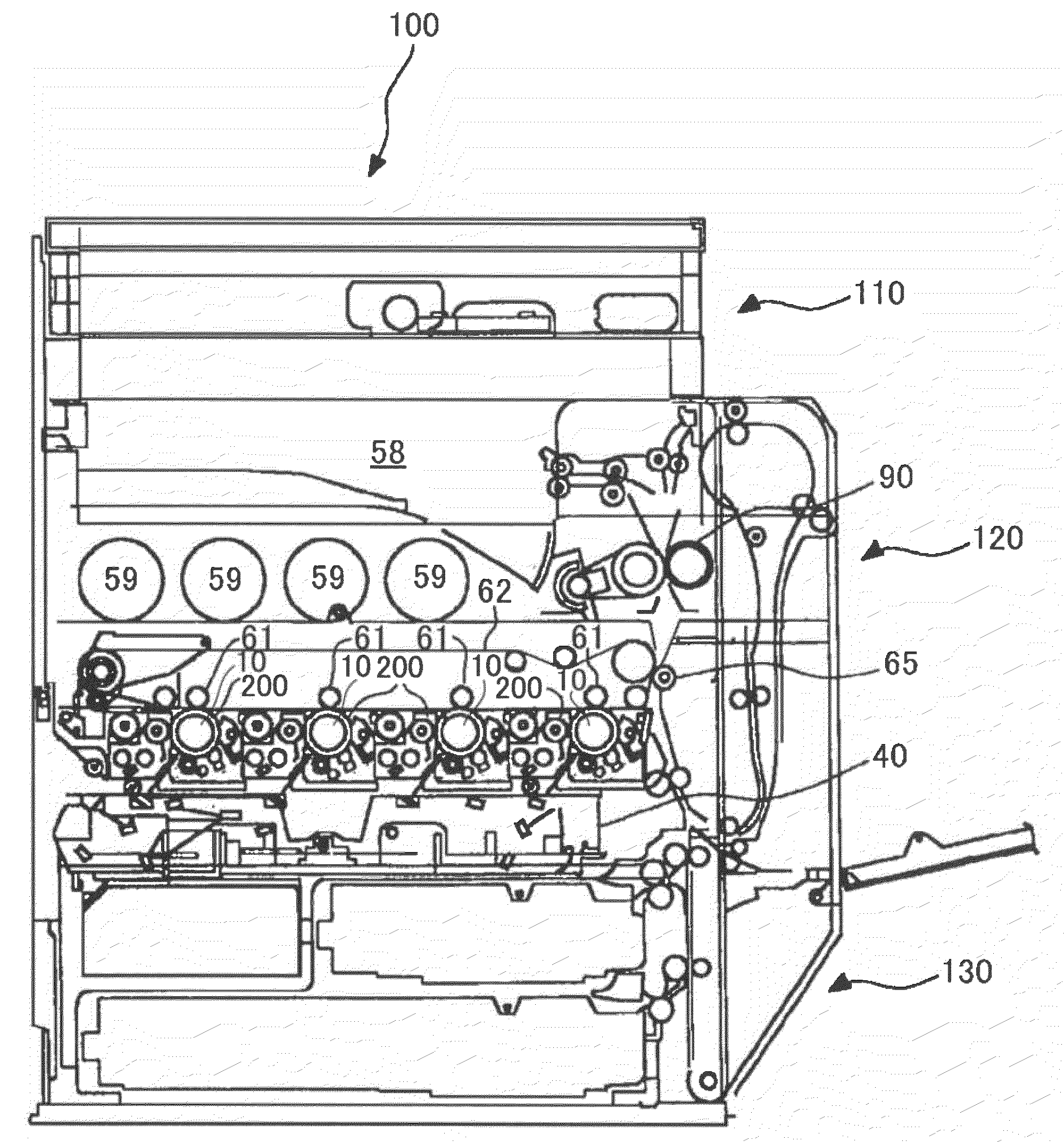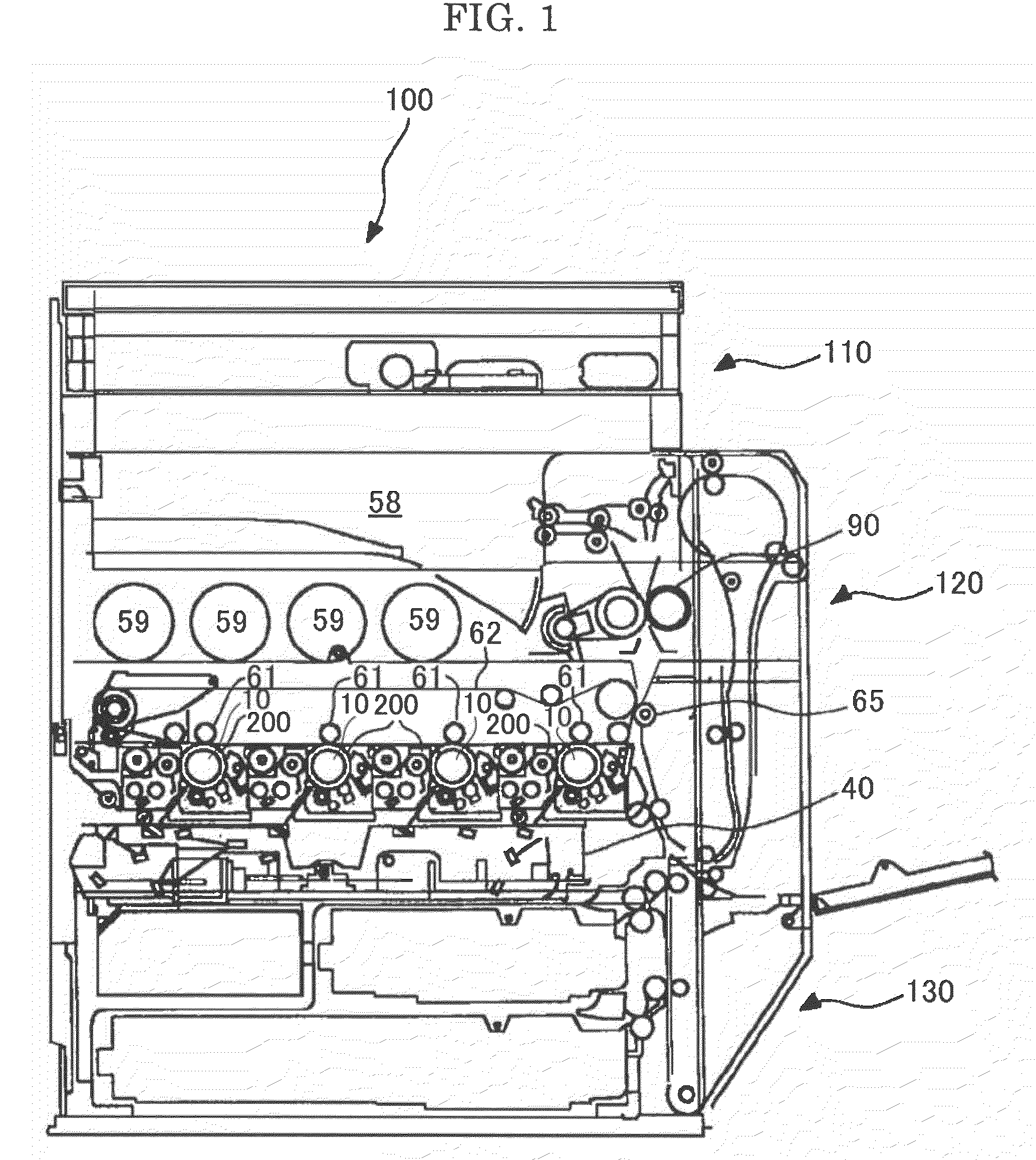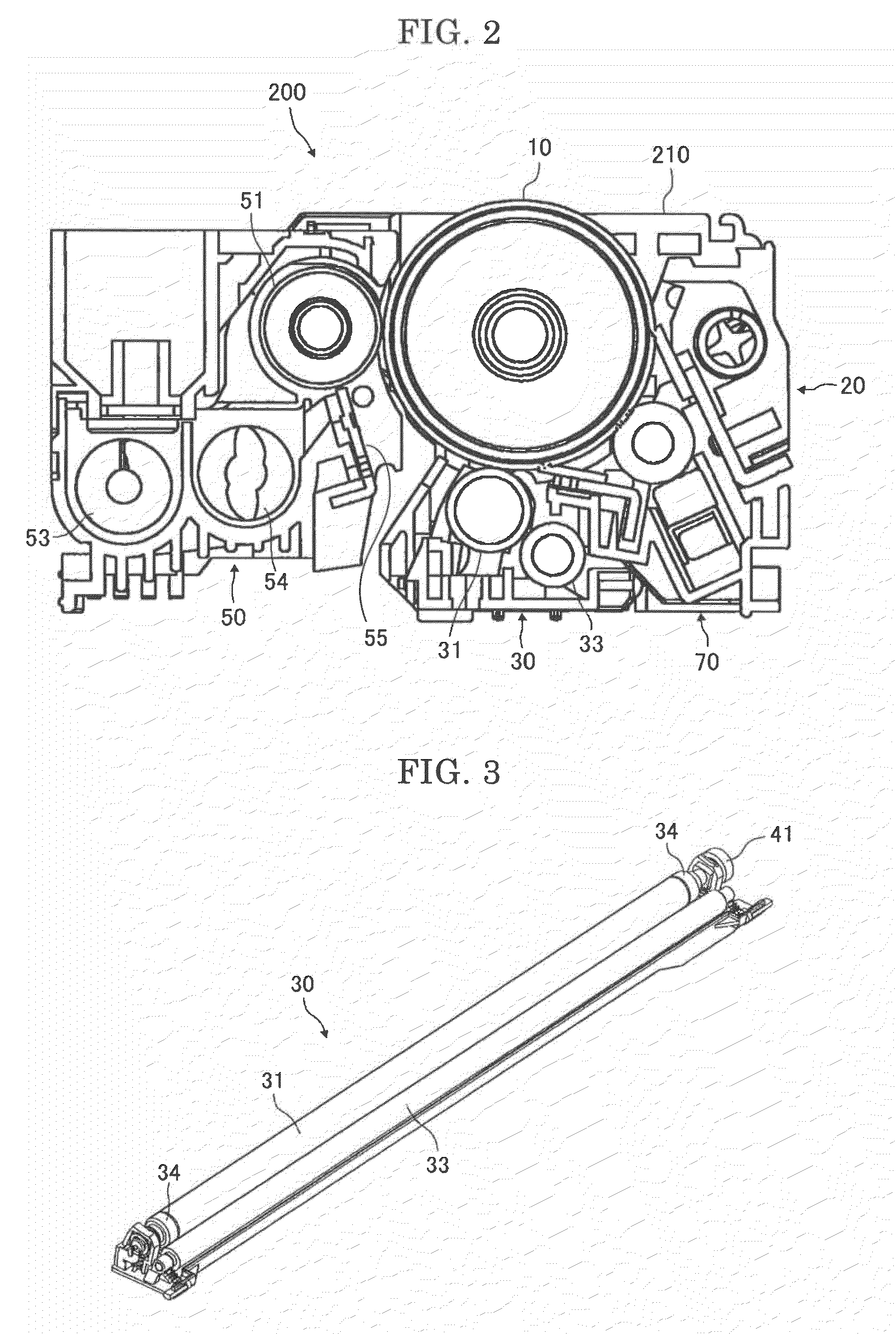Cleaning member, charging device, process cartridge, and image forming apparatus
- Summary
- Abstract
- Description
- Claims
- Application Information
AI Technical Summary
Benefits of technology
Problems solved by technology
Method used
Image
Examples
first embodiment
[0091]FIG. 5 is a side view schematically showing a contact portion between a photoconductor 10 and a charging unit.
[0092]As shown in FIG. 5, a charging roller 31 is biased to be in contact with the photoconductor drum 10 by a spring 32 practically via a bearing, and a charging roller-cleaning roller 33 is also biased to be in contact with the charging roller 31 by a spring member 38.
[0093]A charging roller-cleaning roller 33 of the first embodiment is formed in such a manner that a foam containing a melamine compound is formed into an elastic layer in a cylindrical shape on a core bar member, and a resin or the like attached on the foam by dipping or spray coating so as to provide high-friction coefficient parts 33a on the both ends. A central part in which the high-friction coefficient parts 33a are not provided is a cleaning part 33b formed of the foam. The friction coefficient of surfaces of the high-friction coefficient parts 33a are greater than that of a surface of the cleani...
second embodiment
[0095]FIG. 6 shows a second embodiment of the configuration of the charging roller. A charging roller 31B shown in FIG. 6 has spacer members 34 on both ends of the roller so as to form a charge gap (minute gap) G between a charging roller 31B and a photoconductor 10. A charging roller-cleaning roller 33 in the figure is the same as the charging roller-cleaning roller of FIG. 5, in which high-friction coefficient parts 33a are provided in a region other than an image formation region (a non-image region). Thus, the charging roller-cleaning roller 33 can be rotated according to the rotation of the charging roller in a system including the charge gap (minute gap), without substantially causing a difference in linear velocity. Therefore, a contaminant is not imprinted, and the surface of the roller member to be cleaned can be sufficiently cleaned.
third embodiment
[0096]FIG. 7 shows a third embodiment of the cleaning member, which is a charging roller-cleaning roller in a system including a charge gap (minute gap).
[0097]A charging roller 31B shown in FIG. 7 is the same as that of FIG. 6. However, a charging roller-cleaning roller 133 of the third embodiment extends its length in a direction of a roller axis so long enough to be in contact with spacer members 34 on both ends of the charging roller 31B. Then, high-friction coefficient parts 133a are provided on both ends of the charging roller-cleaning roller 133 so as to be in contact with the spacer members 34 of the charging roller. The configuration of the cleaning roller is the same as that of the first embodiment, and is formed in such a manner that a foam containing a melamine compound is formed in a cylindrical shape on a core bar member, and a resin and the like attached on the foam by dipping or spray coating so as to provide the high-friction coefficient parts 133a on the both ends. ...
PUM
| Property | Measurement | Unit |
|---|---|---|
| Diameter | aaaaa | aaaaa |
| Elasticity | aaaaa | aaaaa |
| Friction coefficient | aaaaa | aaaaa |
Abstract
Description
Claims
Application Information
 Login to View More
Login to View More - R&D
- Intellectual Property
- Life Sciences
- Materials
- Tech Scout
- Unparalleled Data Quality
- Higher Quality Content
- 60% Fewer Hallucinations
Browse by: Latest US Patents, China's latest patents, Technical Efficacy Thesaurus, Application Domain, Technology Topic, Popular Technical Reports.
© 2025 PatSnap. All rights reserved.Legal|Privacy policy|Modern Slavery Act Transparency Statement|Sitemap|About US| Contact US: help@patsnap.com



